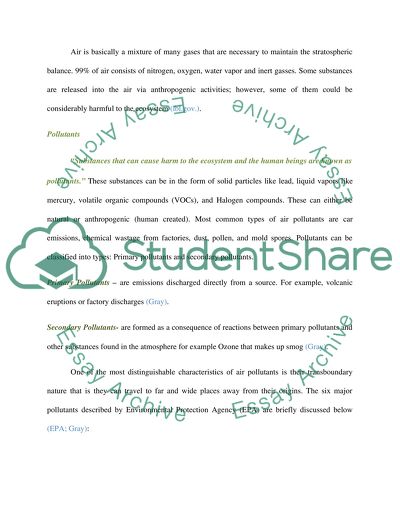Cite this document
(“Air Pollution Research Paper Example | Topics and Well Written Essays - 3250 words”, n.d.)
Retrieved from https://studentshare.org/biology/1395512-environmental-science-air-poulltion
Retrieved from https://studentshare.org/biology/1395512-environmental-science-air-poulltion
(Air Pollution Research Paper Example | Topics and Well Written Essays - 3250 Words)
https://studentshare.org/biology/1395512-environmental-science-air-poulltion.
https://studentshare.org/biology/1395512-environmental-science-air-poulltion.
“Air Pollution Research Paper Example | Topics and Well Written Essays - 3250 Words”, n.d. https://studentshare.org/biology/1395512-environmental-science-air-poulltion.


